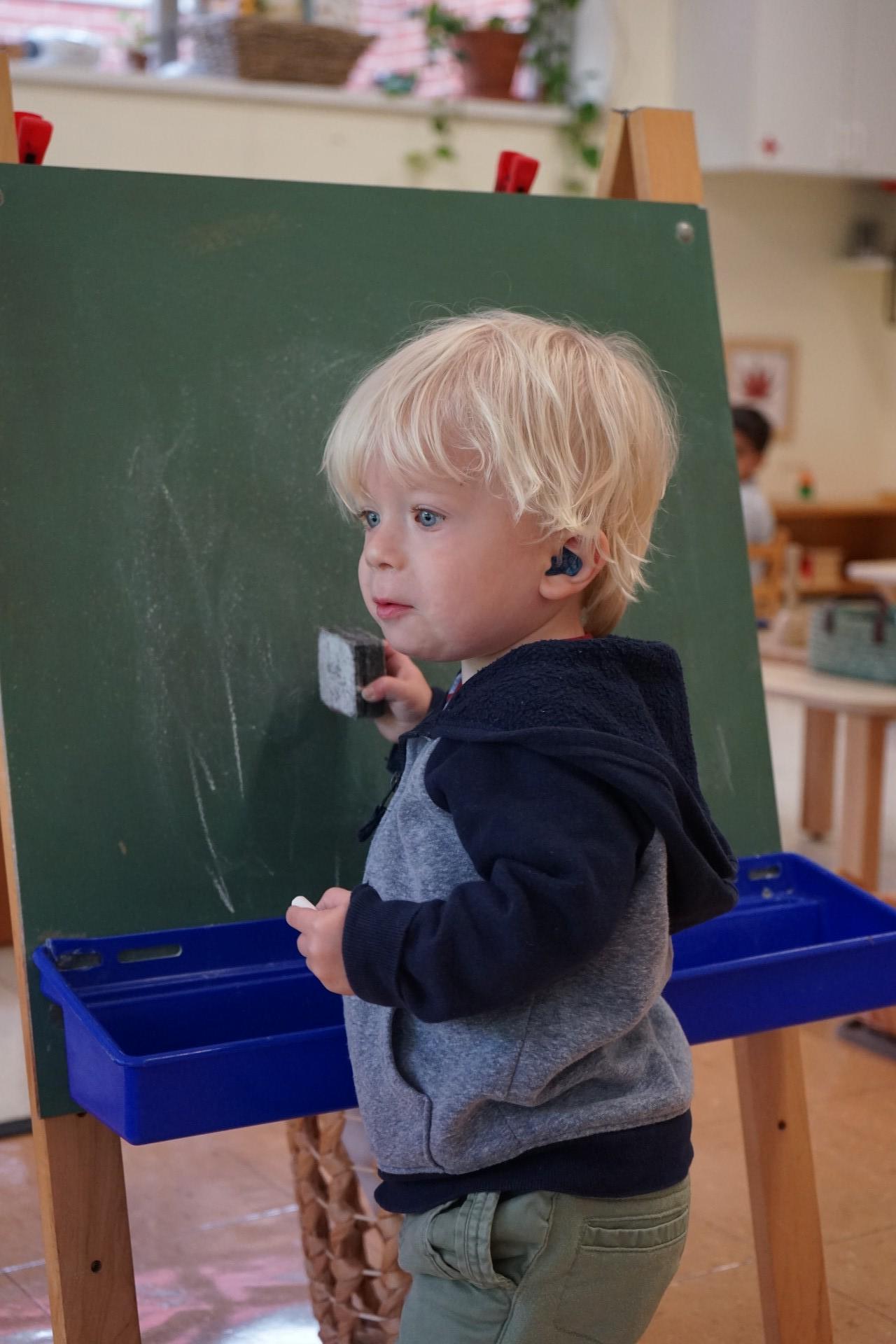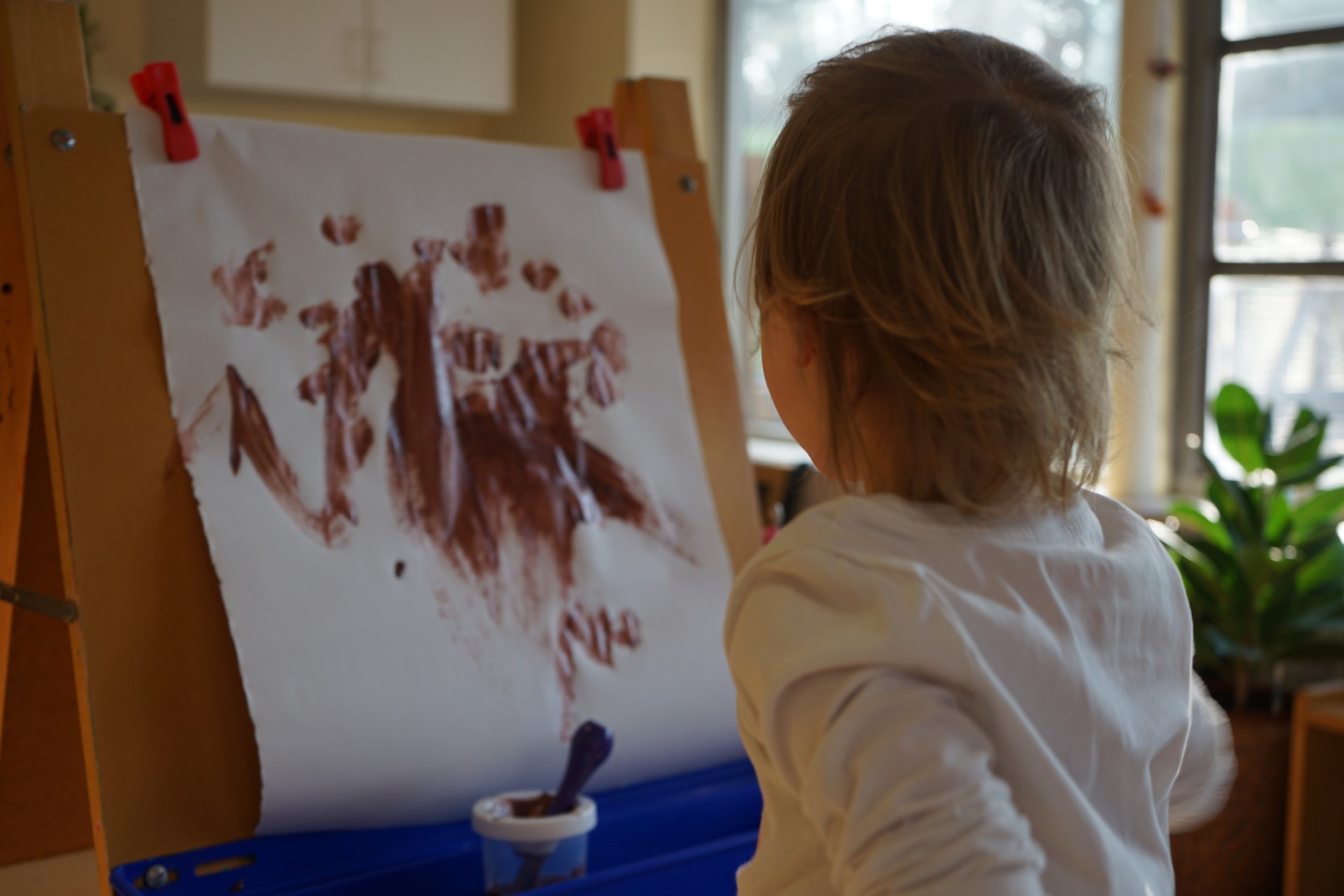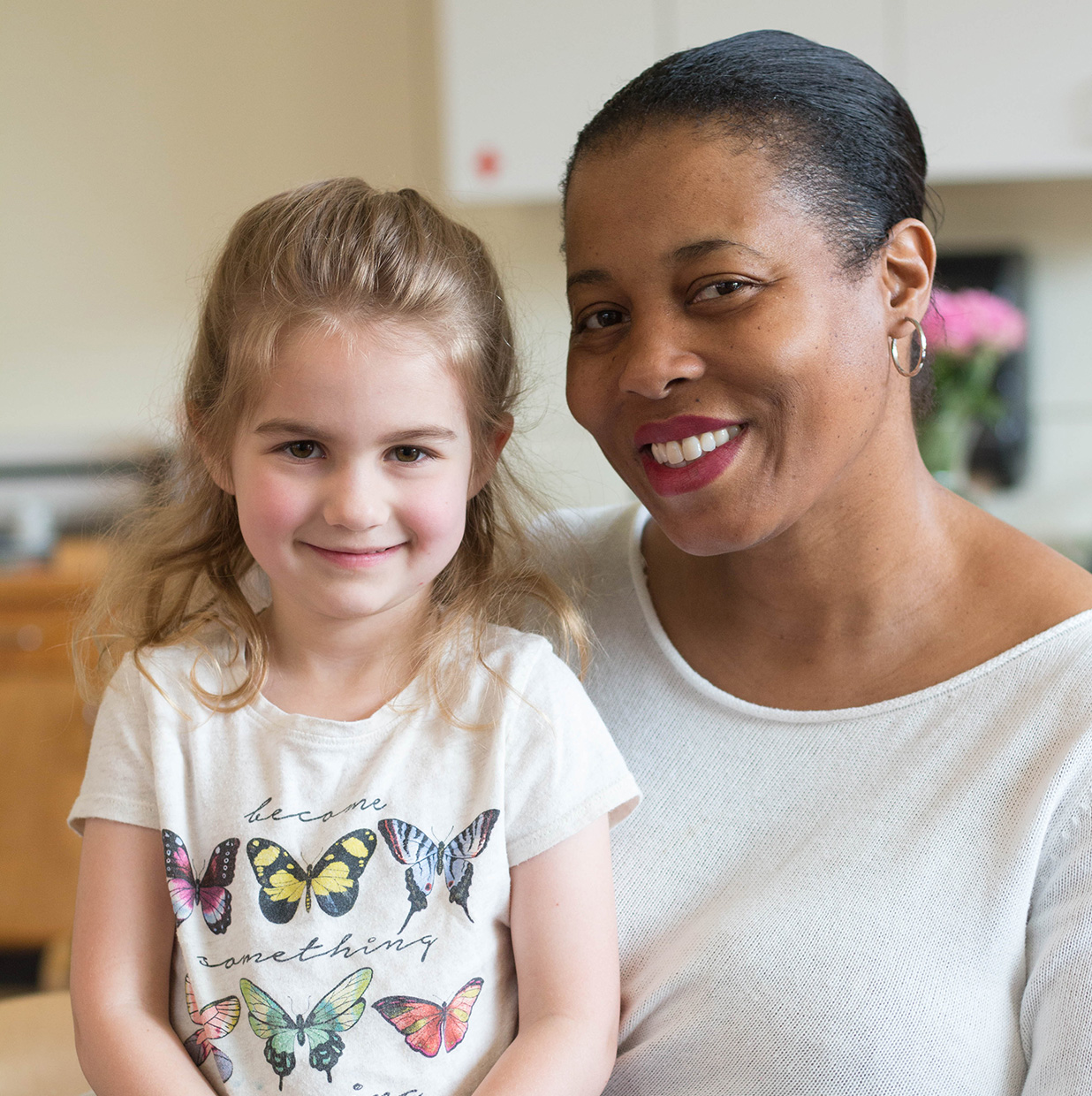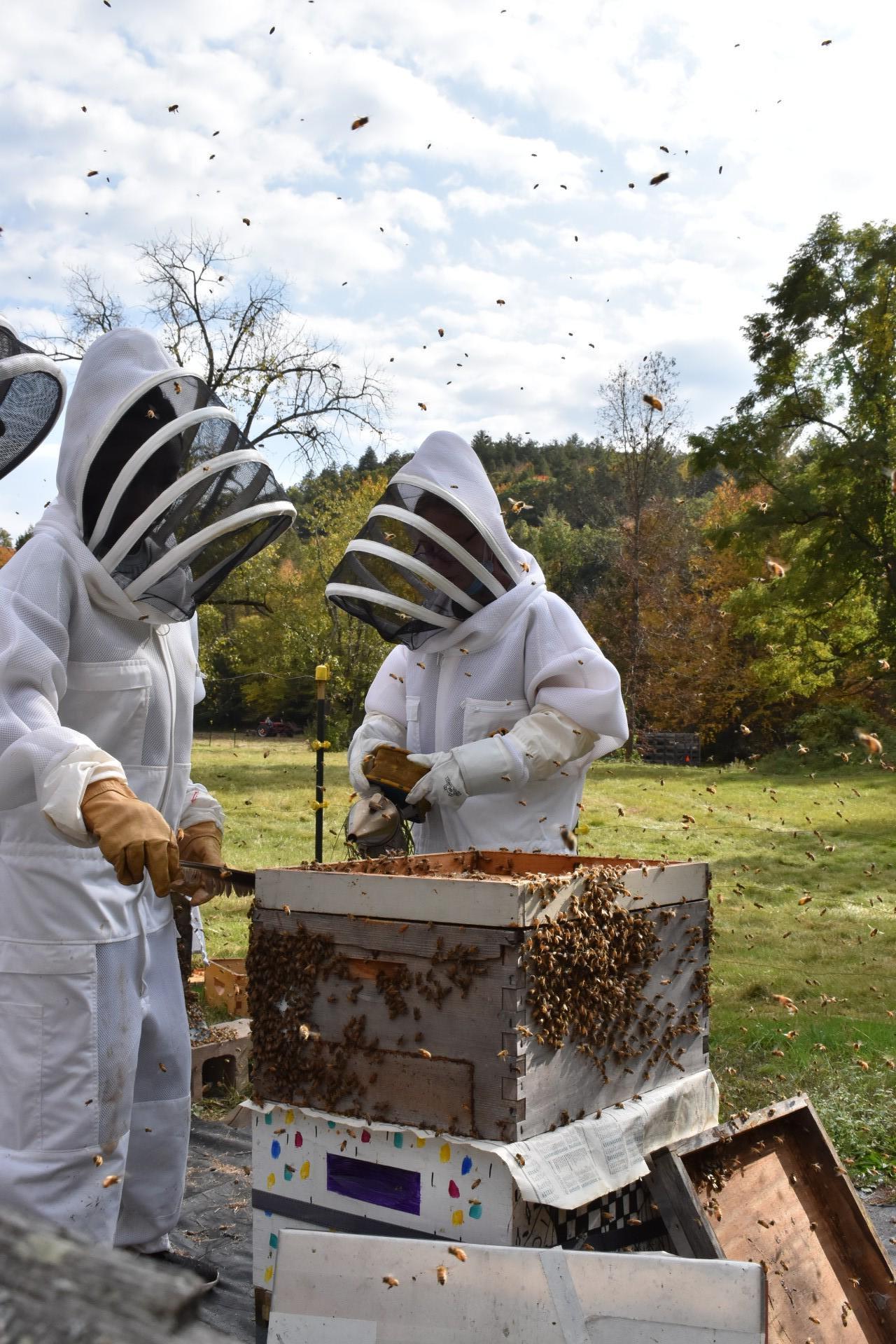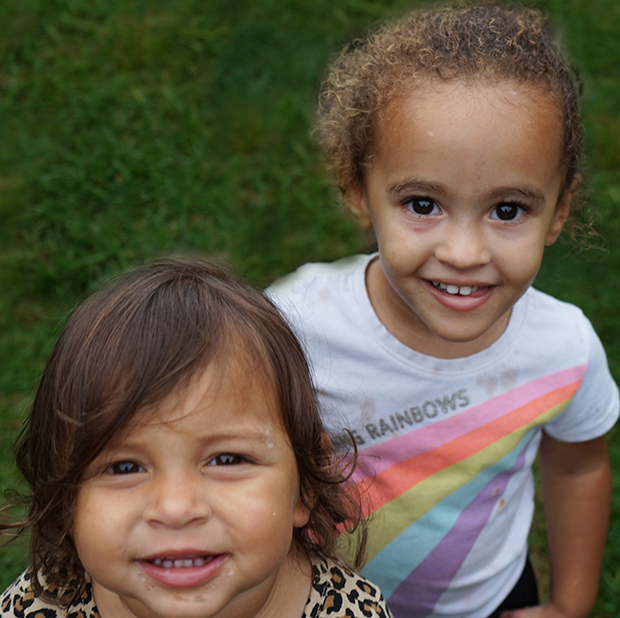Art in the Toddler Classroom
"For the child, work is play and play is work."
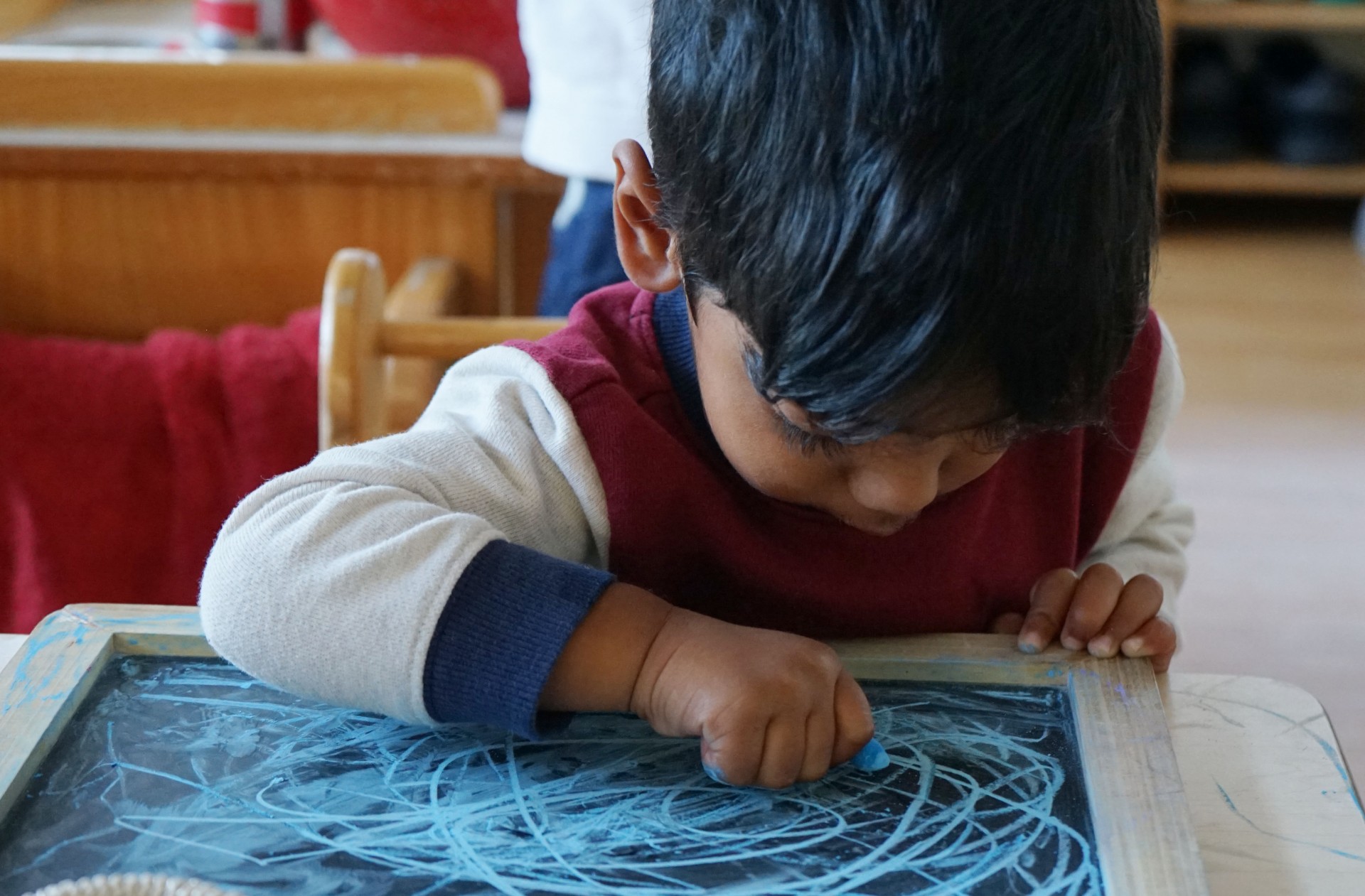
Art: Process Over Product
by Toko Blais Odorczuk
Art, in the Montessori classroom, is used for self-expression and experimentation with a variety of mediums. On the shelves, we offer an array of tools with which children may create their own form of art. The Many activities include, coloring; working with chalk on an easel or table board; painting on an easel; working with clay; cutting; sewing; and, gluing. The adult demonstrates how the material is brought to a table and the different methods in which the tools can be used. The child is then allowed the freedom to explore independently.
Montessori places emphasis on the process of creating art versus the product. Children are encouraged to explore with a variety of mediums without the pressure of completing a specific project. Unlike traditional settings, the children have access to the material at all times and may freely choose which skills to practice at any given time. Since the child is not rushed along to achieve the end product, the activity is not goal oriented. For the child, work is play and play is work. For example, a child begins painting at the easel and forgets to place paper on the easel. What ends up happening: the child paints on the easel and as she's cleaning up, she wipes away her "painting."
The wiping away of her “art” doesn’t bother her. She's done with the process of the painting. She put on her art apron, stirred the paint, used the brush to make stroke patterns on the easel, and cleaned up her work. The paper represents the finished product, and the children more often than not, don't want to take the paper home. Children live very much in the moment; once the easel is cleaned, they are on to the next activity. Rather than focusing on the quality or quantity of the end product, attention needs to be placed on the process and the development of skills acquired through the process. Focusing strictly on the product can stunt autonomy, the ability to be an individual, and change the urge towards the work in the first place.
This article was also published in the Winter 2021 Follow the Child, Community Publication. To see the article click here.
Program Details
Teachers: Toddler teachers augment their undergraduate or graduate-level experience with a diploma earned at an Association Montessori Internationale (AMI) Training Center. Each classroom is also supported by a Teacher’s Assistant who is a native Spanish speaker. In one of the classrooms, the teacher is the Spanish speaker and the assistant speaks English.
Classroom Composition: MSGH has four Toddler classrooms, all of which are carefully balanced by age, gender, cultural background, and children’s maturity and activity levels.
Half-Day, Full-Day and All-Day Programs: MSGH’s half-day Toddler Program runs from 8:30 to 12:00; the program includes snack and ends prior to lunchtime. The full-day program runs from 8:30 to 3:00, and the all-day program runs from 8:30 to 5:30.
Early Morning Care: An early morning care program is available from 7:30 to 8:00.
Transition to the MSGH Primary Program: Children transition from the Toddler Program to the Primary Program when they are developmentally ready. Children generally move between ages 2 ½ and 3 and may transition at any point in the academic year.



